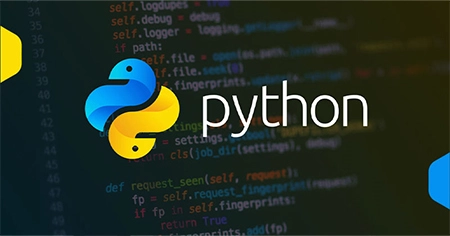Python is among the popular programming language used in web scraping progress. Furthermore, the Python community has developed some great applications perfect for people with basic Python programming skills who work in SEO, marketing, or e-commerce.
Furthermore, Python has been really useful:
- For having to work with large data sets.
- For files that normally cause Excel to crash and necessitate complex analysis to extract meaningful insights.
Here are a few Python SEO projects I've worked on for my websites and at work to give you some ideas on how you can use them for SEO. If you're new to Python, these examples demonstrate why it's worth your time to understand!
How Python Can help technical SEO that will improve your website
Python empowers SEO professionals in various ways due to its ability to automate repetitive, low-level tasks that typically take a long time to complete. This means we have more time (and energy) to devote to important strategic work and optimization efforts that cannot be automated.
Here are the pros and cons of seo using Python.
- investigate your most important keywords
- examine your most important issues
- Determine how you stack up against the top-ranking websites for your target keywords

There are numerous applications for the Python script. This data can help you figure out who is the authority for any subject in Search. This can then be used to:
- reverse engineer their search engine optimization and content strategy
- Determine any gaps in the topics that your rivals are trying to cover. (but you are not) and investigate why they are outperforming you organically.
- Do they have content that is more original? Are they employing specific types of schema to achieve rich results? etc.)
Here are the following 15 Python SEO projects that will improve your website:
1. Identify SEO keywords
While many excellent keyword generator tools are available industrially, they are also simple to create yourself. The suggested keywords from Google Autocomplete and the People Also Ask questions from the Google SERPs section are two excellent data sources to power these.

You can use Python to create simple tools that allow you to bulk generate and extract recommended keywords (ranked by relevance) and a list of all the queries people ask about your topic of choice, offering you a plethora of potential keywords to add to your content.
2. Examine a website for 404 errors and redirect chains
You can also use Python web scraping packages to crawl your websites for things that cause SEO issues, such as 404 or "page not found" errors and 301 redirect chains. 404 errors, which are caused by the inclusion of broken links or images, degrade the user experience and can signal to search engines that the site is not well maintained.

Redirect chains affect your "crawl budget," which means that visiting search engine spiders examine fewer pages than they would otherwise, potentially affecting how many new pages are discovered and how many updated pages are refreshed in the SERPs.
By having to scrape the URLs from your webpage and then employing the queries package to recover the HTTP response code for each site, you can rapidly operate a bulk scan of your website and find pages with a 404 or a 301 reroute chain.
3. Examine non-ranking pages and index bloat
Google Search Console data is a rich source of information on potential website issues, and reviewing it can help you identify various ways to improve your search engine rankings.

One useful analysis is to identify your non-ranking pages so you can go back and improve internal linking, add them to the index if they're missing, or try to figure out why they were excluded. Similarly, index bloat (too many pages in the index) is bad sometimes and can be easily analyzed using Python.
4. Page descriptions and titles
Python's most useful SEO task is scraping page titles and descriptions. Simple checks, such as securing that the headline and description are not too long or too short, can be executed, or the data can be merged with other source materials to recognize a wide range of other items you can make to enhance SEO.
For years, I've been using the Google Search Console API to identify the keywords each page ranks for, choosing the top primary keyword, and then trying to check whether the phrases are present in the title tag or meta tags - effectively allowing you to recognize keyword possibilities for which you already rated.
Many SEO tools will operate this check for you. This feature is known as "Page and SERP titles do not match" in Ahrefs and can be found under the Site Audit > All issues section. However, it is simple to accomplish in Python (or even PHP).
By recognizing the keywords you already rank for but lacking from your page title or meta tags, you can add the phrases and see immediate and easy improvements in both rankings and click-through rate because Google will illustrate the phrases, making them stand out.
5. Find anomalies in Google Search Console data
There are some excellent anomaly detection modeling packages available in Python. These can be applied to almost any time series data and are great for automating the process or poring over data to look for potential issues.

I previously discussed building anomaly detection models that can be used on both Google Search Console data and Google Analytics. These are the more sophisticated end of Python SEO and work well, but they require some prior machine learning knowledge.
6. Create a keyword research tool using Google Autocomplete

Scraping and analyzing can also benefit from Google Autocomplete suggestions. For example, you can create a simple keyword suggestion tool that exhibits a list of similar search terms by having to scrape Google autocomplete recommendations for search queries.
7. Create automated PDF reports
If reporting is a big aspect of your job, you'll likely benefit from automating or semi-automating some of it to liberate your time for more accomplishing work.

GAPandas can be used to computerize Google Analytics reports. The same can be done with Google Search Console data using Ecommerce Tools, and Gilfoyle converts Pandas frames into aesthetically appealing PDF reports. They can all be configured to run instantly, allowing you to wind down.
8. Scrape Google search results
Most SEO tools have managed to scrape search engine result pages (or SERPs) for centuries to help SEOs recognize how their content continues to rank for keyword phrases. While still using Python to query the Google Search Console API yields comparable findings, having to scrape the SERPs yields more data.
While tools for scraping the SERPs are widely available, Google doesn't like it, so it's a fiddly process, and you'll only be able to scrape a small number of pages before being temporarily blocked. You can circumvent these momentary blocks by using proxy servers, but your compiled code may need to be changed regularly because the Search engine changes the Web pages of the results that can be showcased.
If you want to learn the fundamentals of website scraping, create your own Google SERP scraper in Python.
You can extract a slew of potentially useful information from Google's SERPs in addition to having to scrape the title, summary, and URL presented in search results. This includes keywords, questions asked by other people, related searches, and words illustrated in bold by Google (which often reveal useful synonyms you should use on your pages).
9. Create a website scraper
Most SEOs who use Python do some form of website scraping. Some fantastic Python web scraping packages are available (check out Scrapy, Requests-HTML, and Advertools). These vary in complexity, and you'll need some HTML and CSS knowledge to use them, but you can use them for almost anything.
10. Take questions from Google's People Also Ask widget
The People Also Ask widget in the Google search engine results is another great source of potential
keyword ideas for content writers.
Incorporating questions and answers into your content and defining what customers are looking for can
enhance your chances of making an appearance in these valuation slots or assist you in scoring higher.
11. Examine the robots.txt files
Similarly, the robots.txt file found at the root of almost every website can reveal a lot about the site structure and the location of any sitemaps. Again, these can be scraped with Python and parsed in Pandas to see how a site is set up.
12. Create a tool for tracking search engine rankings
Following on from the SERP scraper, one similar application is to use Python to create a simple Google rank-tracking tool. These use a Python list of target keywords to question Google for the highest page for the domain you want to track.
They are helpful for basic observing, but you'll likely be obstructed for a while as Google hates being managed to scrape. This is ironic, given that it obtains all of its data using the same techniques. However, set up a cron job or an Airflow data pipeline, and you can quickly, easily collect, and report on several keywords.
13.Data from Google Analytics and Google Search Console are available
If you're an SEO, you'll spend a lot of time analyzing Google Analytics and Search Console data. So you'll be relieved to know that you can use the official APIs to access both data sources computationally in Python.
These are challenging to utilize and require a lot of scripts; however, I've authored a pair of useful Python packages - GAPandas and EcommerceTools - that make the process much simpler and involve so little code. You can even collect information from both source materials and perform advanced SEO testing in an issue of lines of code. They are both involved with Pandas.
14. Python scrapes schema.org microdata
The world’s biggest web search providers, including Google, Microsoft, Yahoo, and Yandex, established schema.org. To improve search engine customer experience by inspiring website owners to develop "structured data" that is much simpler for search results to crawl and decode.
The microdata can take several forms, but it is usually microdata (embedded in the page's HTML), JSON-LD, or, less frequently, RDF-A. Furthermore, there is now an abundance of schema.org schemas covering everything, including products, reviews, and promotions to people, organizations, and recipes.
While it is frequently overlooked, scraping and parsing microdata instead of scraping page content directly can save you significant time and effort.Schema.org microdata should follow the same format, allowing you to create a single scraper that can work across multiple sites, significantly reducing development and maintenance costs.
The first step is to analyze schema.org metadata utilization to find which dialects and conceptual frameworks are used on the web pages you wish to scrape. Then you can use Extract to scrape schema.org metadata from the page and store it in a Pandas data frame, CSV, or database.
15. Examine the technologies used on competitors' websites
You may also want to investigate the technologies your competitors are employing on their websites, which you can do online using tools such as Built with. These examine the page's source code for references to the underlying technologies, such as the e-commerce or JavaScript plugins or the blogging platform used.

While scraping competitive innovation data is fun, the information isn't always accurate, and the Python Built with package is striking.
Conclusion
Python, as an SEO tool, has a lot of sense. Many methods can be automated, saving you a large amount of time. Python has tools for almost everything, from website scraping to machine learning, and it's simple to integrate data from multiple sources with tools like Pandas.








